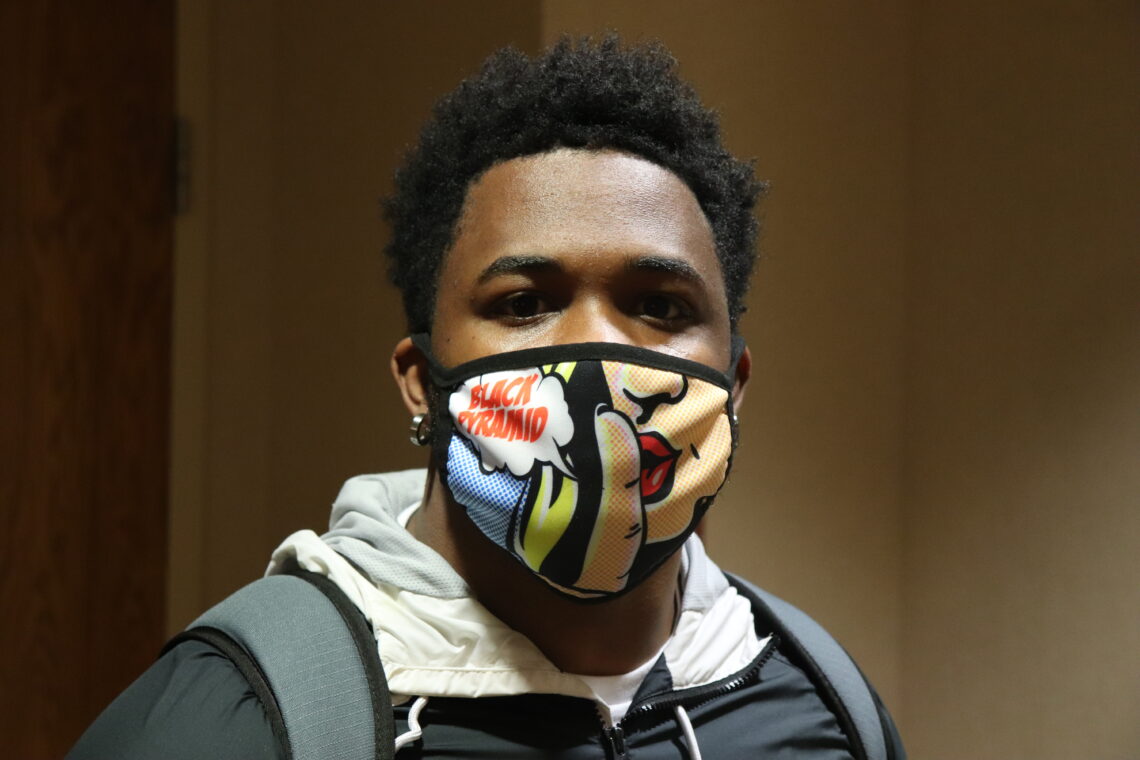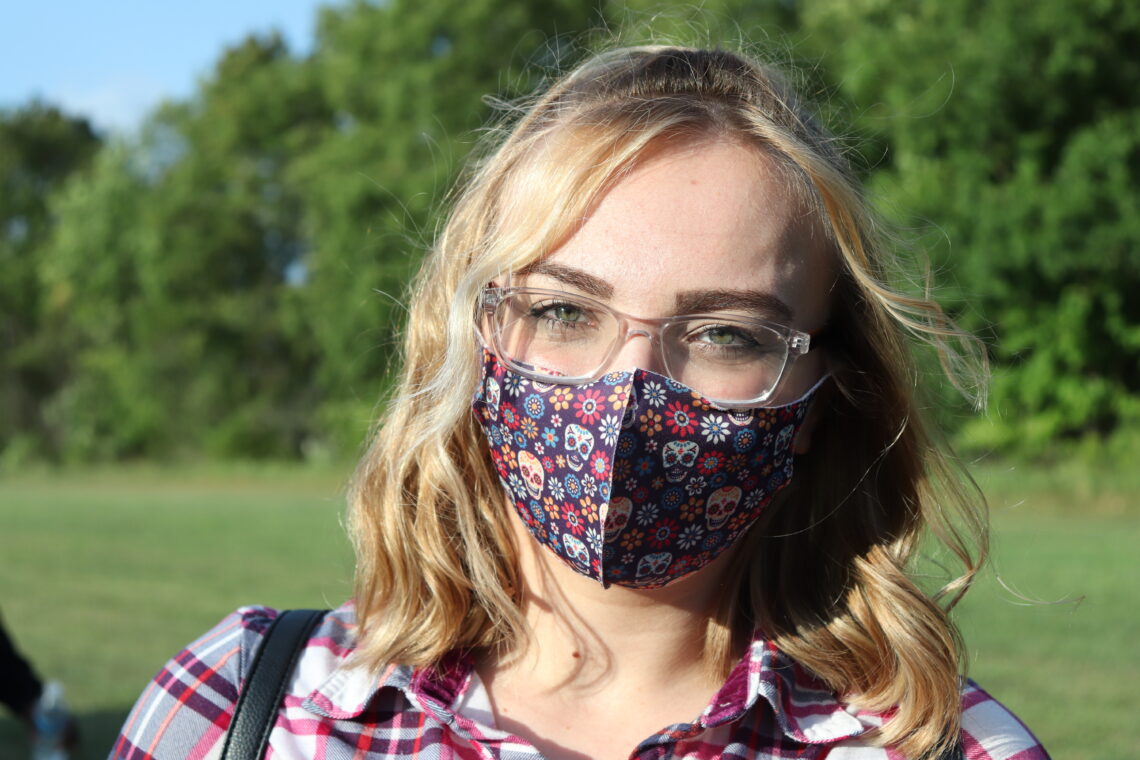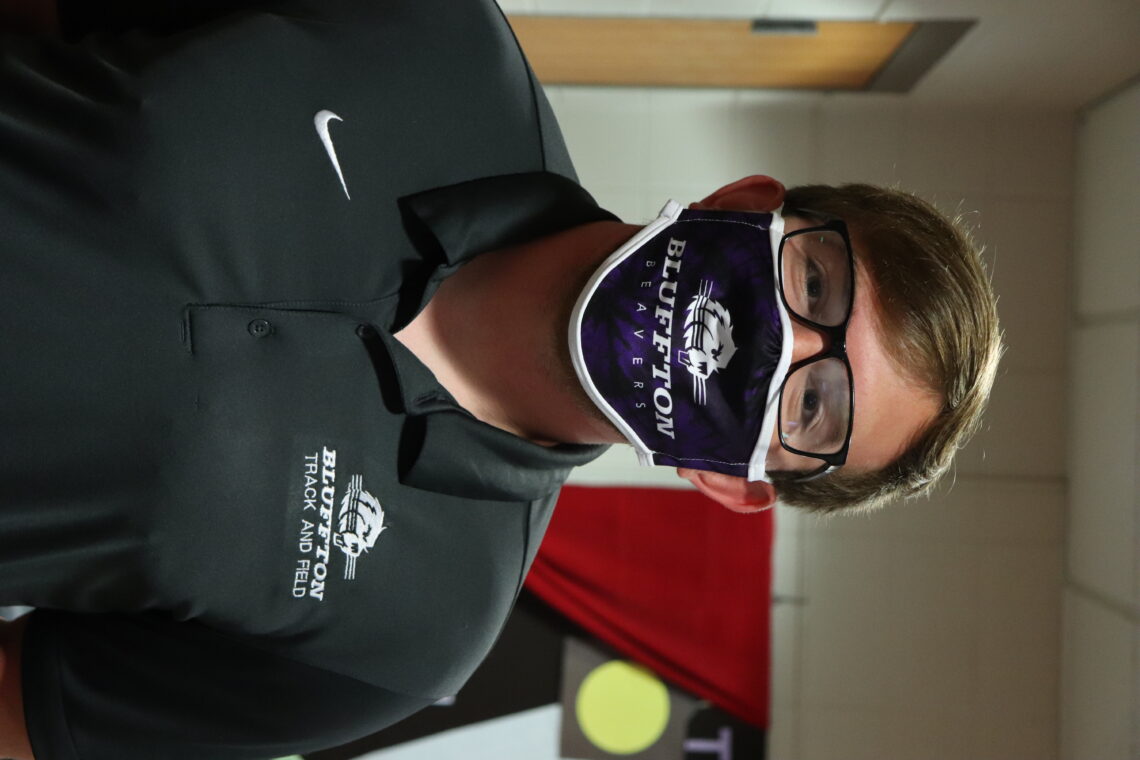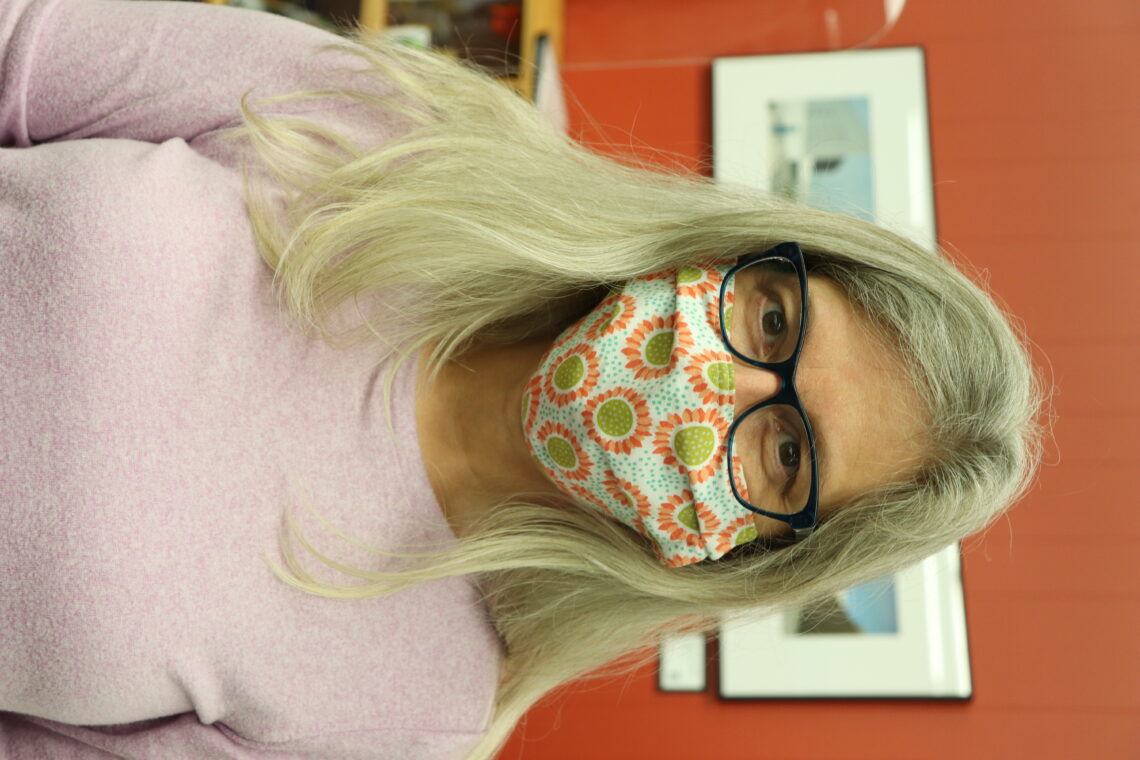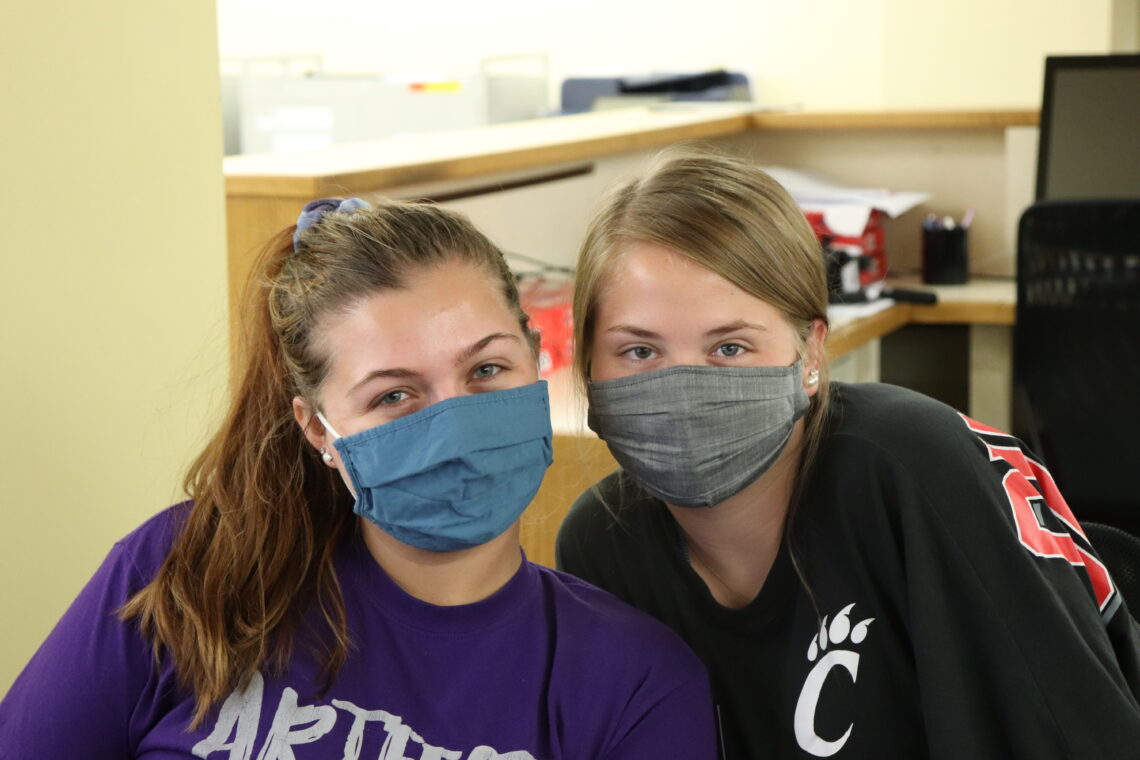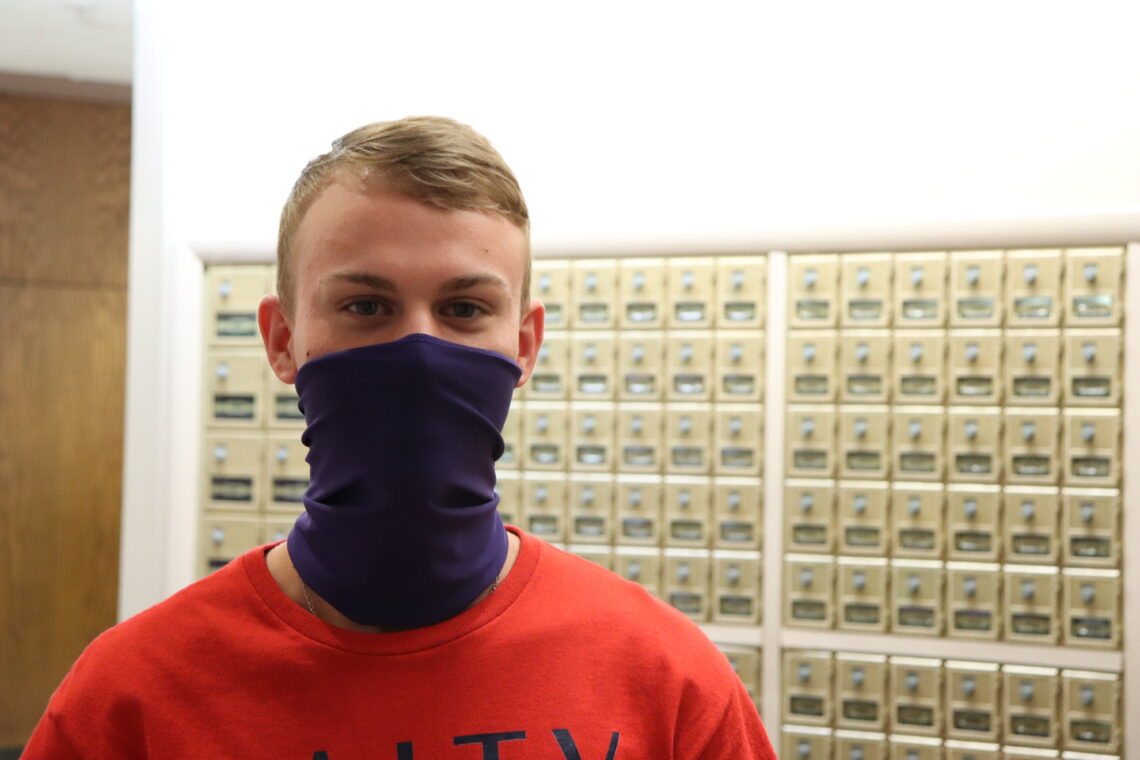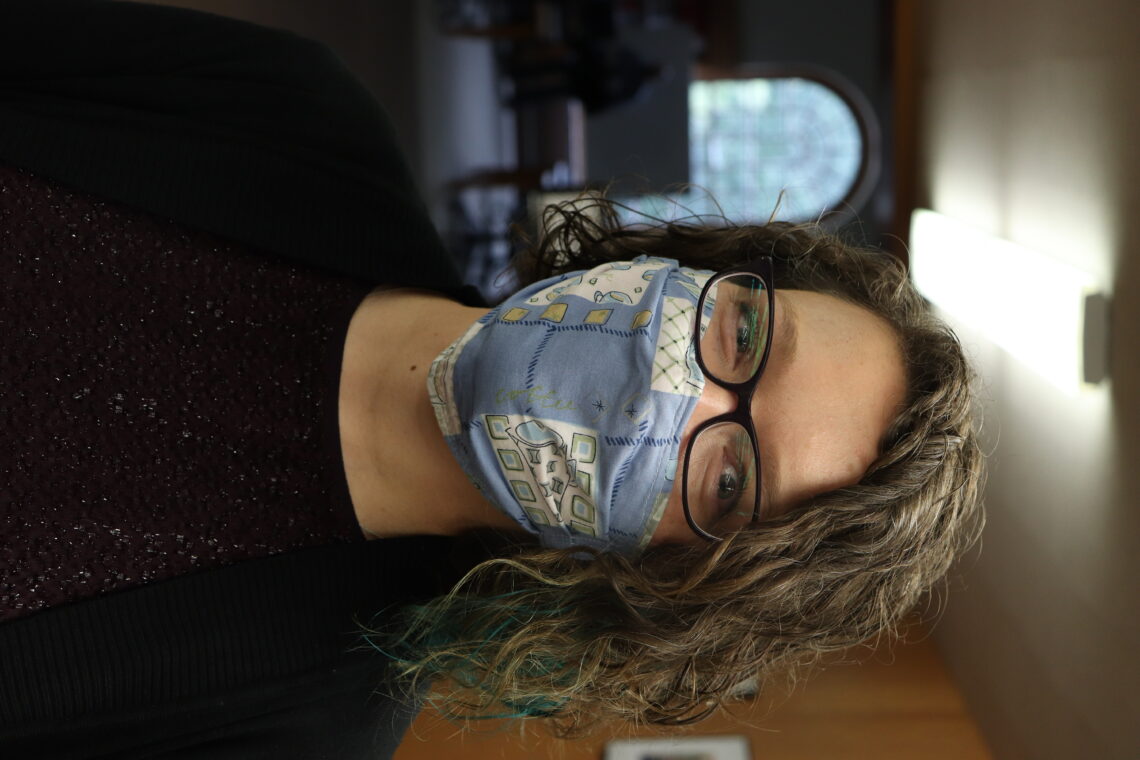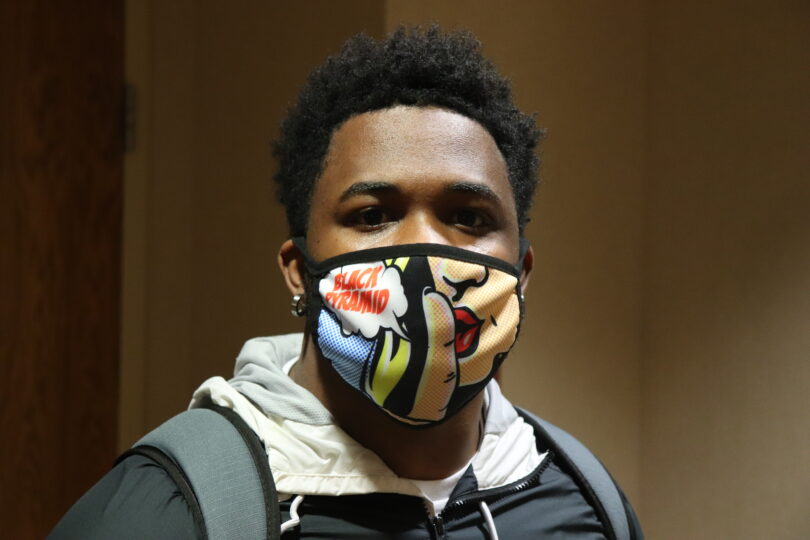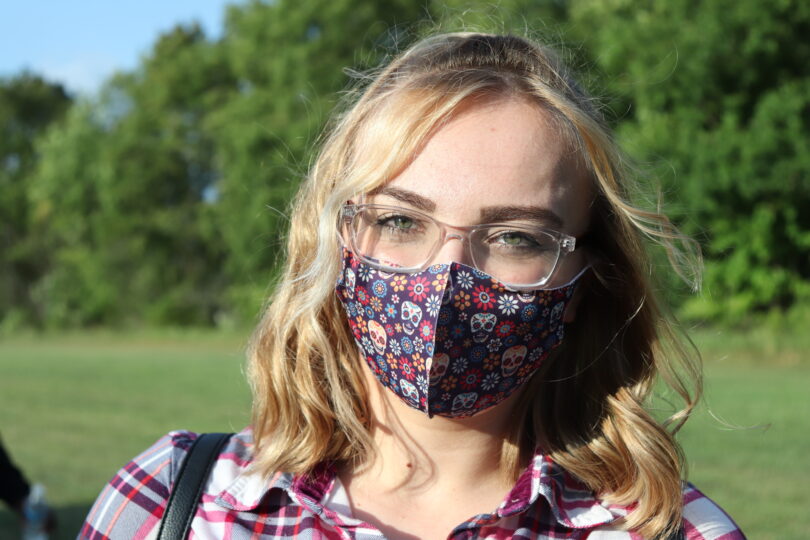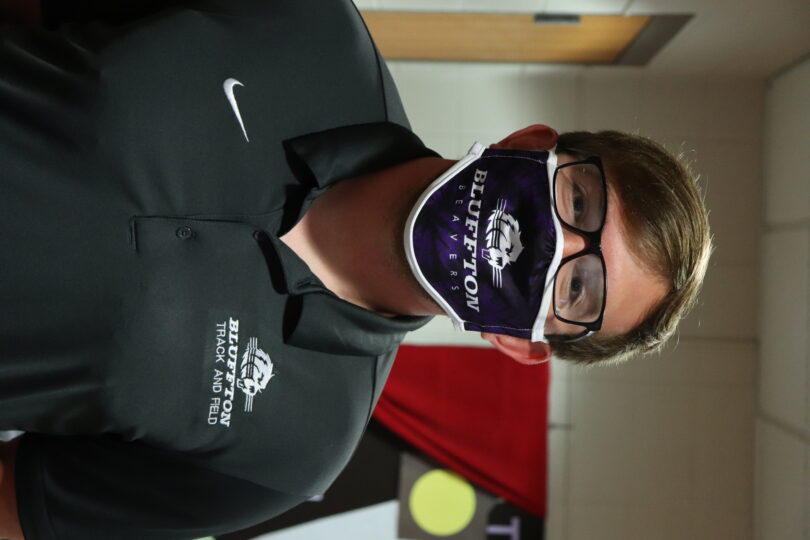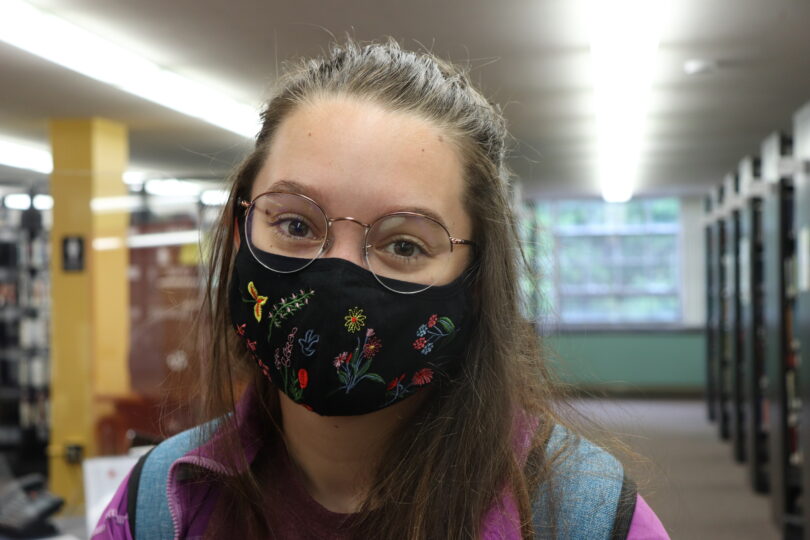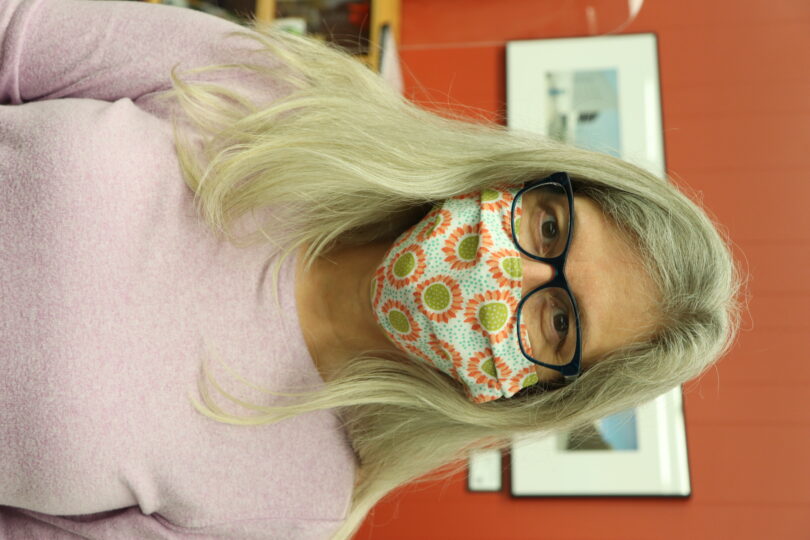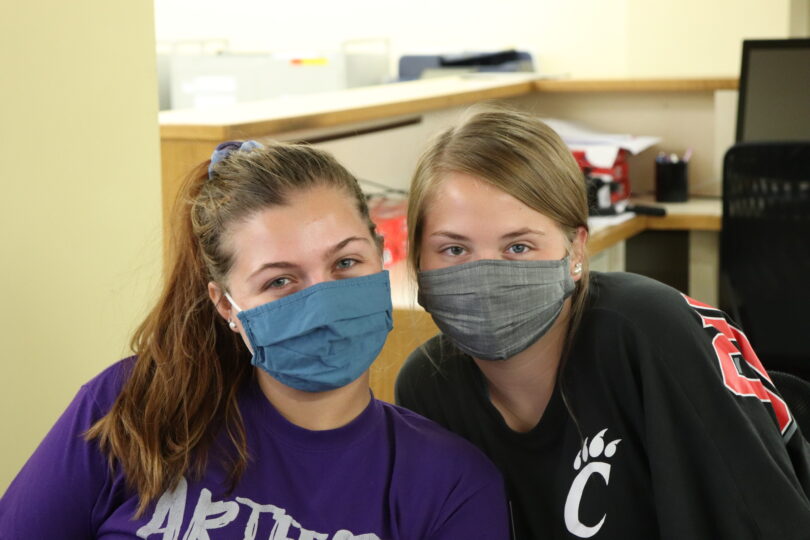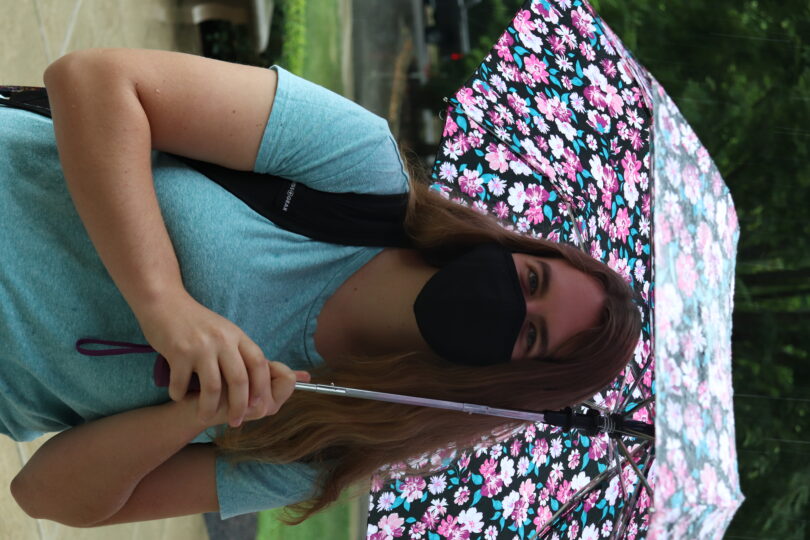Dee Greely, a senior criminal justice major, found his mask at the store Champs. Photo by Olivia Tennefoss.
Rona Stafa, a pre-med and biology junior, acquired her mask from Community Market in Bluffton and sported it during the cross-country inter-squad meet and picnic. Photo by Olivia Tennefoss.
Darrell Briggs, the GA for track and field, sported his mask that was given to him by the university. Photo by Olivia Tennefoss.
Kayla McSwords, a senior dietetics major, received her mask from her twin sister who ordered it from Etsy—so they could match and think about each other, even though they are far apart.
Senior exercise science major John Draper, was given his mask by the basketball team and was using it while working at Freshens. Photo by Olivia Tennefoss.
Audra Oglesbee, who is the Learn and Earn Coordinator and runs Access Services at Musselman Library, bought her mask from her daughter’s friend who was using the money to buy more material and donate masks to a hospital. Photo by Olivia Tennefoss.
Tabatha Koetter (left) , a junior intervention specialist and elementary education major, found her mask at Old Navy. Katlin Sanning (Right), a sophomore nursing and psychology major bought her mask from Target. Photo by Olivia Tennefoss.
Freshman criminal justice major Mercedez Osley acquired her mask from a business online called Kitsch because they looked like quality masks. Photo by Olivia Tennefoss.
Zander Proper, a freshman Criminal Justice major, acquired his mask from the baseball team. Photo by Olivia Tennefoss.
Sophomore exercise science major Emma Payne, accented her bright and flowery umbrella with a black mask she ordered from Amazon. Photo by Olivia Tennefoss.
Interim Library Director Carrie Phillips, wore a homemade mask to work that featured ear loops made from nylon stockings to allow comfort and stretch. Photo by Olivia Tennefoss.
The requirement for students, faculty and staff to wear masks during classes, in buildings and where social distancing is not possible, has created a mask culture at Bluffton University. Whether it’s homemade, bought or disposable—masks contribute to making a personal statement and have become a signature accessory.
This photo gallery gives a glimpse into what the mask culture looks like on campus.
Since masks have become a signature staple in the day to day, there are also some tips from the American Academy of Dermatology Association on mask hygiene, because maskne (mask acne) is real.
- Always wear a fresh and clean mask every day: the oils, germs and dirt from the day before are not always visible to the naked eye, wearing a fresh mask gives your face a fresh start to the day.
- Change your mask if it gets overly dirty: this applies to the previous point, if the mask is visibly dirty, then it should not go back on your face before it gets washed again.
- Wash/cleanse your face often: This helps clear the dirt and grime collected from the mask and helps prevent maskne.
- Use natural moisturizers that aren’t oil-based: this helps prevent your face from being “sticky” and cling to what is on the masks or clog your pores.
- Think about skipping makeup (from the nose down): Makeup behind a mask can make your mask dirty and fill your pores with different products, so maybe think about doing only, or mostly, makeup around the eyes.

